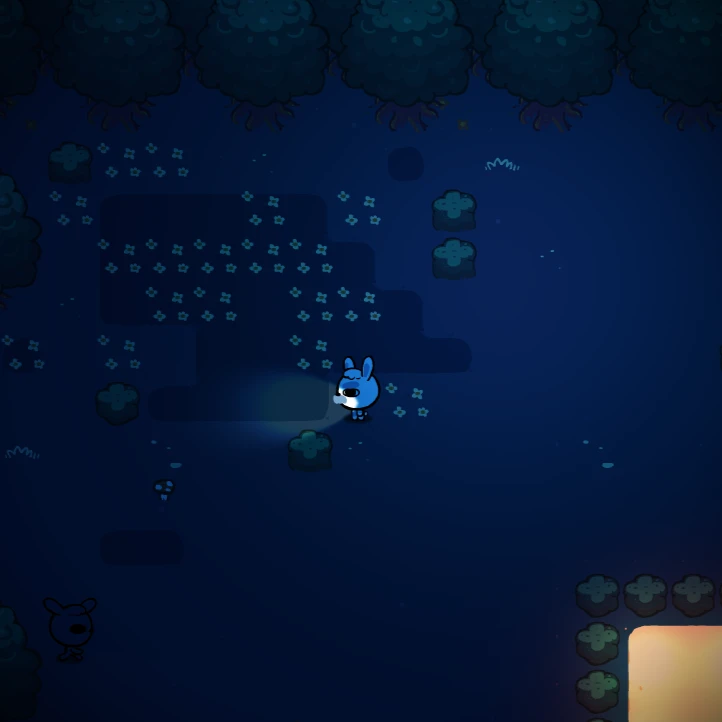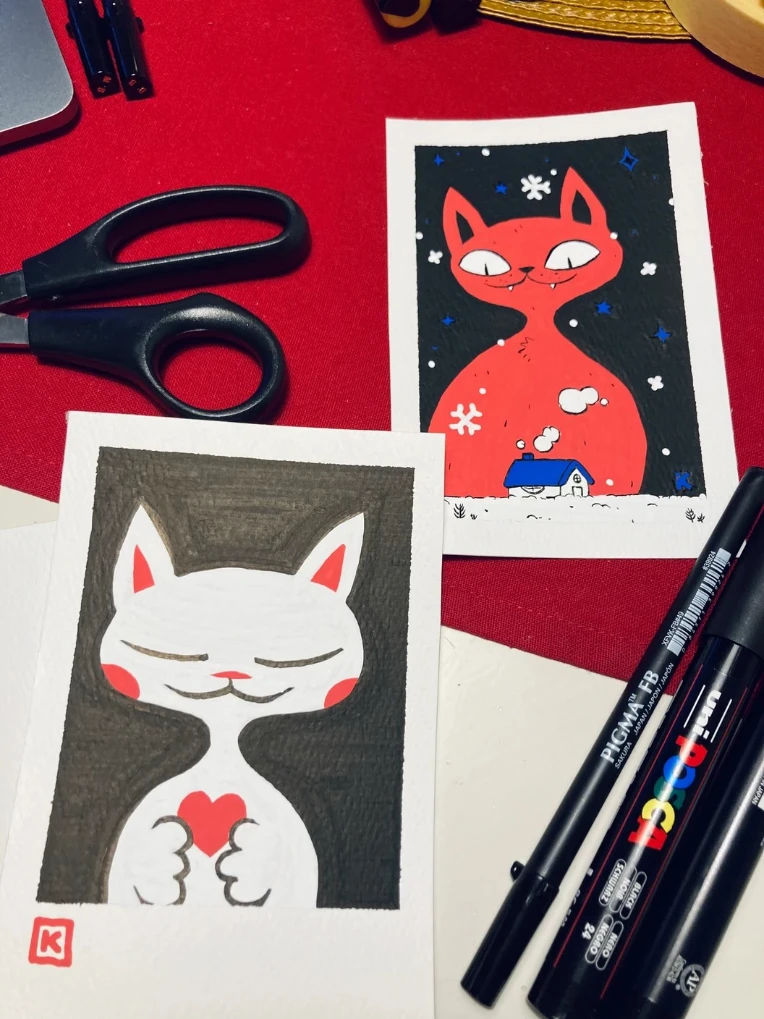
Forest Story sketch
Strong momentum this summer. I added one more page to Bird Show and created seven new pages for Forest Story, bringing it to a total of 34 FS-pages so far.

WIP Game Dev
In autumn, I explored video game development, completing two playable levels and producing a rather large amount of game art. Musho joined the project to compose the soundtrack. Progress was steady for a while, but the project will require discipline to reach completion.
I also had the chance to exhibit at VXO Zine Fest in Växjö, my old hometown. A pleasant surprise awaited me there: Miku Maria Gustavsson from Seriefrämjandet had reviewed The One That Got Away earlier this year in Bild & Bubbla, Sweden's premier magazine about comics!

Musho (right) and myself at Nördarnas Julmarknad, Solna.
Halloween came along. We put In the Heart of Night on sale for the season, and I entered my story Best Friends Forever in Newgrounds’ "Halloween Spooktacular" contest. The comic was featured on the front page and added to a select contest collection, but didn’t win any accolades.
As 2024 drew to a close, I experimented with traditional art techniques, using ink paint markers and pens on watercolor paper. These paintings were sold at Nördarnas Julmarknad, the year’s final comics and art festival—a fun and memorable event.
From beautiful snowy Stockholm, I’m wishing you all the best for the year ahead.
2024 Achievements:
- Organized, printed, and published the In the Heart of Night anthology.
- Drew the 6-page horror story Best Friends Forever.
- Drew 10 new pages for Forest Story.
- Drew 5 new pages for Bird Show.
- Video game development.
- Created several traditional ink and watercolor paintings.
- Exhibited at three comic festivals (Stockholm, Växjö, Solna).
- Wrote 5 blog posts.
2025 Goal:
- Get published.
Some more pics from 2024:

Forest Story sketch

Cat paintings

Table at Nördarnas Julmarknad
❄️❄️❄️



















